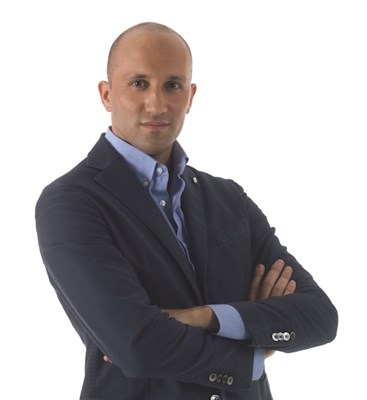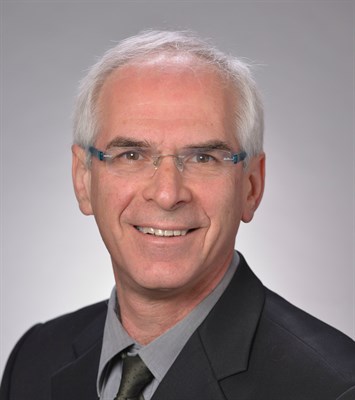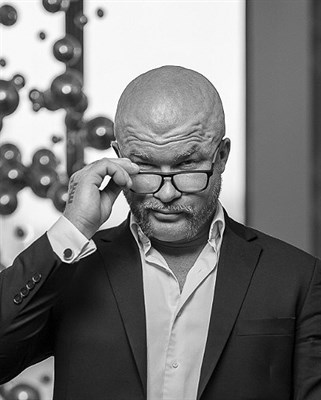| 08:00 |
Delegate Registration, Tea/Coffee & Exhibition
|
| 08:45 |
Welcome and Introduction
ADI President, Dr Zaki Kanaan and ADI President Elect, Dr Pynadath George
|
| 09:00 |
Anatomical Considerations for Sinus Augmentation Sinus augmentation using autogenous bone or bone substitutes is a safe procedure with high predictability for the rehabilitation of severely atrophic posterior maxillae if there are no signs of pre-existing maxillary sinusitis.
Schneiderian membrane perforation represents the most common complication with a prevalence of approximately 35%.
The reasons may be associated with osteotomy technique and in particular with anatomic variations within the sinus, such as membrane thickness, presence of antral septa, arterial injury, sinus wall bony fenestration and inadequate ridge height.
Moreover, given the extensiveness of the maxillary vascular network, it is not infrequent to run into vascular complications that may compromise the outcome of surgery.
Therefore, the scope of this lecture is to give practitioners the adequate anatomical knowledge for carrying out lateral window maxillary sinus floor elevation by improving the standard of clinical care and patient safety.
Learning Objectives
-
To understand the importance of anatomical knowledge in sinus augmentation procedures
-
To learn the key anatomical structures relevant to sinus surgery, including bones, nerves, blood vessels and soft tissues
-
To acquire the necessary skills for safe and accurate management of anatomical structures within the sinus.
Gabriele Rosano  Dr. Rosano was born in Milan in 1980; after graduating with a DDS degree from the University of Milan in 2004, he received a Master’s degree in Craniofacial Anatomy from the René Descartes University of Paris V and a Master of Science in Oral Surgery from the University of Milan, focusing his research and clinical activity, respectively, in the field of oral surgical anatomy and oral surgery. In order to increase his knowledge of the basics of medicine, in 2013 he achieved a PhD degree in Physiopathological, Neuropsychobiological Sciences and Life-Cycle Care from the University of Milan. Dr. Rosano was born in Milan in 1980; after graduating with a DDS degree from the University of Milan in 2004, he received a Master’s degree in Craniofacial Anatomy from the René Descartes University of Paris V and a Master of Science in Oral Surgery from the University of Milan, focusing his research and clinical activity, respectively, in the field of oral surgical anatomy and oral surgery. In order to increase his knowledge of the basics of medicine, in 2013 he achieved a PhD degree in Physiopathological, Neuropsychobiological Sciences and Life-Cycle Care from the University of Milan.
Since 2016 he has been Senior Lecturer at the Lake Como Institute® Advanced Implant Training Center, Como, Italy (Director: prof. Tiziano Testori). In 2021 he was awarded the prestigious title of FICD (Fellow, International College of Dentists).
Always passionate about head and neck anatomy, he took on the role of Scientific Director of the Academy of Craniofacial Anatomy (ACA) with the aim of promoting the study of the anatomy of the facial massif. Author and Co-author of 5 books in implantology; he lectures nationally and internationally. Author of numerous publications indexed in PubMed on oral surgical anatomy and implant therapy
|
| 10:00 |
Coffee/Tea Break and Exhibition
|
| 10:30 |
Sinus Lift and 3D Bone Reconstruction In our daily practice, sometimes we can manage the lack of bone in posterior area by just doing a sinus lift, but there are sometimes that our patients also suffer from a 3D bone atrophy. So, there is when we have to rebuild all the area.
In my opinion, in order to regenerate bone, the best way is by using autologous bone, usually from the mandibular ramus.
In order to use this autologous bone, I follow Pr Tessier's and Pr Khoury' s indications, so that we can be fully predictable in these kind of treatments.
Learning Objectives
-
Know how to use xenografts, allografts and autologous bone in sinus lift procedures
-
Manage complications during sinus lift procedures
-
Manage chronic sinusitis before sinus lift procedures
-
Know how to take bone grafts from chin and ramus with microsaw system and piezosurgery
-
Know how to place the bone graft for a 3D bone augmentation
-
Know how to manage the soft tissues in bone reconstruction procedures
Guillermo Escobar Ruiz
- Clinical Teacher in the Periodontology and Implantology Master's Degree (Seville University)
- European Oral Surgeon (Societè Française Chirurgie Orale)
- Master Program in Bone Grafting and Soft Tissue Management (Pr Khoury Münster University)
- International Lecturer in Advanced Bone Graft management
|
| 11:30 |
Moderated Discussion
|
| 12:00 |
Lunch and Exhibition
|
| 13:00 |
State of the Art With Sub Crestal Sinus Aumentation The placement of endosseous implants in posterior edentulous maxilla is normally challenging task in implant dentistry due to maxillary sinus pneumatization. Various sinus augmentation techniques have been used with impressive success rates aimed at developing these sites for implant placement.
Sub Creastal sinus floor elevation has been proven as a predictable surgical procedure to increase the bone height in the posterior maxilla. Numerous techniques using Osteotomes, Piezoelectric surgery, non cutting burs and hydraulics had been reported over the years with high success rate and predictability. A novel minimally invasive technique, osseodensification, is proposed to facilitate maxillary sinus bone graft augmentation.
The osseodensified crestal window overcomes the previous limitations of traditional crestal approaches with respect to residual bone height (RBH) of ≤1.5 mm as well as vertical height of augmentation (>10 mm). Step by step procedure will be presented with long term clinical and histological results of more than 9 years.
Learning Objectives
- Understand the term Internal Sinus Lift and the techniques to achieve it
- Learn about Osseodensification and its application in Internal Sinus Lift
- Evaluate and follow up cases with long term stability
Ziv Mazor  Prof. Ziv Mazor is one of Israel’s leading periodontists. He graduated from the periodontal department at the Hadassah School for Dental Medicine in Jerusalem. Prof. Ziv Mazor is one of Israel’s leading periodontists. He graduated from the periodontal department at the Hadassah School for Dental Medicine in Jerusalem.
Since 1993, Prof. Mazor has been engaged in clinical research in the field of Bone Augmentation and Sinus Floor Elevation. He is currently participating in the quest for improving and evaluating new grafting materials, using various growth factors as well as researching “osseodensification”- a paradigm shift in dental implantology.
Prof. Mazor is a renowned author in dental implantology, and is known worldwide for his innovative approaches in cutting-edge procedures and technologies. He is a world known speaker and has lectured extensively both nationally and internationally. Last year was his 25th consecutive year speaking at the AAP.
Prof. Mazor is part of the continuing education faculty at the New York University. He conducts and moderates advanced international implantology courses and workshops. He is the past President of the Israeli Periodontal Society.
Prof. Mazor maintains a private practice and a teaching center limited to periodontal and implant dentistry in Tel Aviv, Israel.
|
| 14:00 |
Coffee/Tea Break and Exhibition
|
| 14:30 |
Maxillary Sinus Augmentation: Prevention and Management of Complications According to literature, it is well known that the occurrence of complications appears to be limited to patients with a predisposition to this conditions. In order to prevent and manage these complications it is important to identify anatomical particularities and to diagnose the health status of the maxillary sinus. The right pre-operative analysis, which often requires the intervention of other health professionals, of those parameters is essential for the case selection.
Learning Objectives
-
How to select the patient?
-
How to detect potential complications
-
How to identify the infectious risk?
-
How to manage the complications ?
Pascal Valentini  In 1982, Pascal Valentini obtained his D.D.S. (Doctor in Dental Surgery) from the University of Paris VII. He was then Clinical Assistant in the Department of Oral Surgery at the University of Paris VII between 1983 and 1987, and after he graduated in Oral Implantology in 1992, he became Clinical Assistant in the Department of Oral Implantology from 1992 to 1996. In 1982, Pascal Valentini obtained his D.D.S. (Doctor in Dental Surgery) from the University of Paris VII. He was then Clinical Assistant in the Department of Oral Surgery at the University of Paris VII between 1983 and 1987, and after he graduated in Oral Implantology in 1992, he became Clinical Assistant in the Department of Oral Implantology from 1992 to 1996.
He is a Program Director for European Post Graduate Oral Implantology at the University of Corsica (Corte, France) and for the University of Liege in Belgium.
Dr Pascal Valentini is also Associate Professor of Implant Dentistry at University of Loma Linda (California, USA) , Adjunct Professor of Implant Dentistry in Griffith University (Quennsland , Australia) and Visiting Professor of Oral Surgery at the University of Milan (Italy).
Pascal Valentini is the President of European Association for Osseointegration (2012-2014) .
He is the author of several scientific articles in the field of maxillary sinus grafting procedures and bone regereration
|
| 15:30 |
Coffee/Tea Break and Exhibition
|
| 16:00 |
Palatal Approach for Sinus Lifts The rationale for palatal approaches for sinus grafts and Indications for this approach and classification
Radoslaw Jadach  Dr Radoslaw Jadach is the first doctor in Poland to apply a pre-orthodontic decortication procedure using piezoelectric device and first created a classification of anatomical indications for the treatment of maxillary sinus floor elevation with access from the hard palate. Dr Radoslaw Jadach is the first doctor in Poland to apply a pre-orthodontic decortication procedure using piezoelectric device and first created a classification of anatomical indications for the treatment of maxillary sinus floor elevation with access from the hard palate.
He focuses on microsurgery techniques and extensive soft tissue reconstructive surgery for the purpose of alveolar implantology.
Dr Jadach graduated from the Faculty of Medicine and Dentistry, Wroclaw Medical University and was a physician in its Department of Oral and Maxillofacial Surgery. He trained at the University of New York: Continuing Education Linhart Dental Program NYU Implant Continuum Education and OSIS and CEIA.
|
| 17:00 |
Moderated Discussion
|
| 17:30 |
Drinks Reception
|
| 19:00 |
Close
|